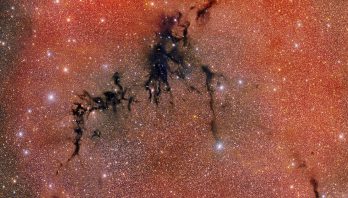
Circinus West: A Dark Nebula Harboring a Nest of Newly Formed Stars
A celestial shadow known as the Circinus West molecular cloud creeps across this image taken with the Department of Energy-fabricated ...
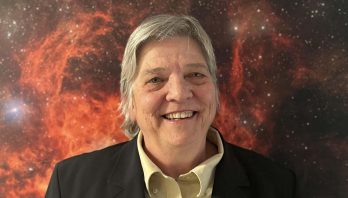
NOIRLab’s Lori Allen Elected 2023 AAAS Fellow
Lori Allen, Mid-Scale Observatories (MSO) Director at NSF NOIRLab, has been named a Fellow of the American Association for the ...
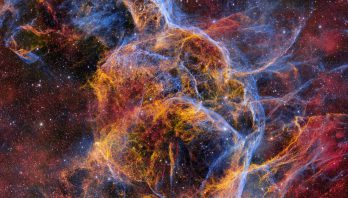
Ghostly Stellar Tendrils Captured in Largest DECam Image Ever Released
With the powerful, 570-megapixel Department of Energy-fabricated Dark Energy Camera (DECam), astronomers have constructed a massive 1.3-gigapixel image showcasing the ...
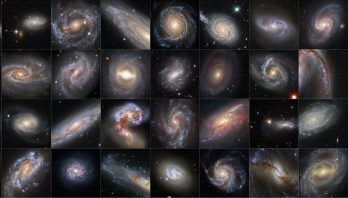
Our Mysterious Universe Still Evades Cosmological Understanding
Science can uncover new knowledge, but it can also reveal what we don’t understand. New research is shedding light on ...
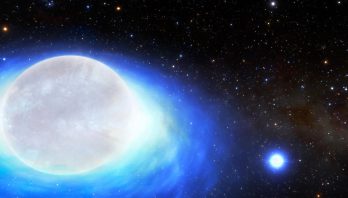
NOIRLab: First Kilonova Progenitor System Identified
Astronomers using the SMARTS 1.5-meter Telescope at Cerro Tololo Inter-American Observatory in Chile, a Program of NSF's NOIRLab, have uncovered ...
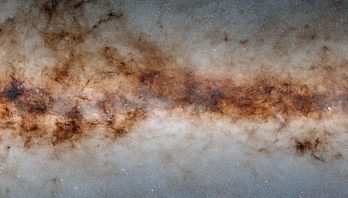
NOIRLab: Billions of Celestial Objects Revealed in Gargantuan Survey of the Milky Way
Astronomers have released a gargantuan survey of the galactic plane of the Milky Way. The new dataset contains a staggering ...
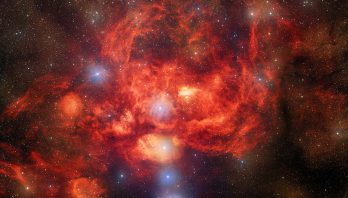
NOIRLab: Dark Energy Camera Captures Bright, Young Stars Blazing Inside Glowing Nebula
NOIRLab has released a breathtaking image of the star-forming Lobster Nebula (NGC 6357), which is located about 8000 light-years from ...
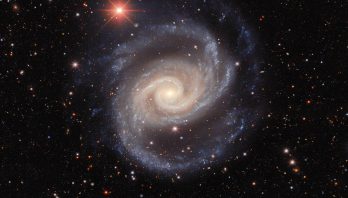
NOIRLab: Spanish Dancer Galaxy Twirls into View
This image, taken by astronomers using the US Department of Energy-fabricated Dark Energy Camera on the Víctor M. Blanco 4-meter ...
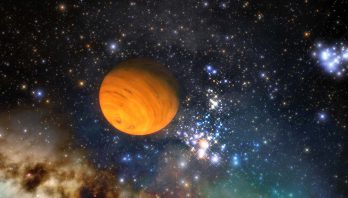
NOIRLab: Largest Collection of Free-Floating Planets Found in the Milky Way
Using observations and archival data from several of NSF's NOIRLab’s observatories, together with observations from telescopes around the world and ...

NOIRLab: Plunging into the Furnace
The denizens of the Fornax galaxy cluster populate this image from the Víctor M. Blanco 4-meter Telescope, located in Chile ...
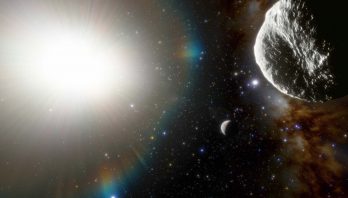
NOIRLab: Fastest Orbiting Asteroid Discovered at Cerro Tololo
Using the powerful 570-megapixel Dark Energy Camera (DECam) in Chile, astronomers discovered an asteroid with the shortest orbital period of ...
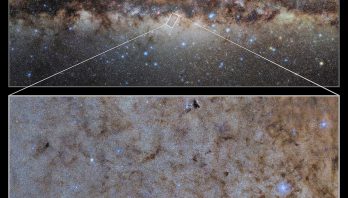
NOIRLab: Astronomers are Bulging with Data
Star-studded image shows the glittering central parts of the Milky Way ...
